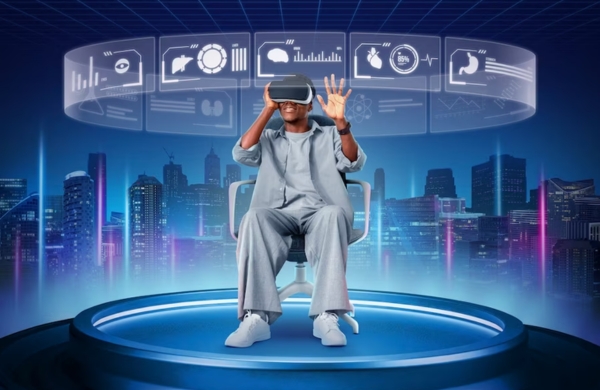
Introduction:
Virtual Reality technology has come a long way since its inception, and the pace of innovation in this field continues to accelerate. What was once considered science fiction is now becoming a tangible reality, opening up a world of immersive experiences and groundbreaking applications.
From gaming and entertainment to healthcare and education, VR is transforming various industries. In this article, we explore some of the recent innovations in virtual reality technology that are pushing the boundaries of human perception and revolutionizing the way we interact with digital content.
Enhanced Visuals
One of the key areas of focus in Virtual Reality technology is improving visual fidelity to create a more realistic and immersive experience. Innovations such as higher-resolution displays, wider field-of-view, and improved refresh rates are enhancing the level of detail and reducing motion sickness.
Technologies like foveated rendering, which allocates more processing power to the user’s central field of vision, and eye-tracking, allowing for more natural interaction, are also gaining traction.
Also Read: Apple VR Leak Reveals Exciting Applications to Launch on June 2023
Haptic Feedback
Immersive experiences are not limited to visual and auditory stimuli alone. Innovations in haptic feedback technology are enabling users to feel and touch virtual objects, adding an extra layer of realism. Advancements in haptic gloves, suits, and controllers are providing users with the ability to sense textures, pressure, and even temperature changes within the virtual environment. This technology has significant potential in training simulations, medical applications, and gaming experiences.
Wireless and Mobile VR
VR headsets were initially tethered to powerful computers, limiting their mobility and accessibility. However, recent innovations have made significant strides in wireless and mobile VR. Standalone headsets, like the Oculus Quest series, offer high-quality experiences without the need for external devices.
Additionally, advancements in 5G networks are facilitating low-latency, high-bandwidth connections, enabling more seamless streaming of VR content and multi-user experiences.
Social VR
Virtual reality has the power to bring people together, even when they are physically apart. Social VR platforms and applications are emerging, allowing users to interact with friends, family, and strangers in virtual spaces. These platforms provide shared experiences, virtual meeting rooms, and opportunities for collaborative activities, revolutionizing remote work, education, and social interactions. With avatars and real-time communication, social VR is pushing the boundaries of digital connectivity and fostering a sense of presence.
Also Read: Role of AR/VR in the Development of the Metaverse
VR in Healthcare and Therapy
The healthcare industry is embracing VR technology for diagnostics, treatment, and therapy. Virtual reality simulations can help train medical professionals in complex procedures, reducing the risk and cost associated with traditional training methods.
VR is also being used for pain management, phobia treatment, and mental health therapy. The immersive nature of VR allows patients to confront and overcome their fears in a controlled and supportive environment.
VR in Education
Virtual reality is transforming the way we learn and educate. Immersive educational experiences enable students to explore historical events, visit distant locations, and interact with complex concepts in a more engaging manner.
VR simulations can simulate scientific experiments, enhance language learning, and provide hands-on training in various fields. By creating interactive and immersive environments, VR has the potential to revolutionize traditional educational approaches.
Conclusion
The field of virtual reality technology is experiencing rapid advancements, fueled by breakthroughs in hardware, software, and content development. Innovations in visual fidelity, haptic feedback, wireless connectivity, social interactions, and applications in healthcare and education are expanding the possibilities of VR.
As the technology becomes more accessible and affordable, we can expect to see even more transformative applications in various industries. Virtual reality is no longer just a concept of the future; it is an exciting reality that is reshaping the way we perceive and interact with the digital world.

Leave a Reply